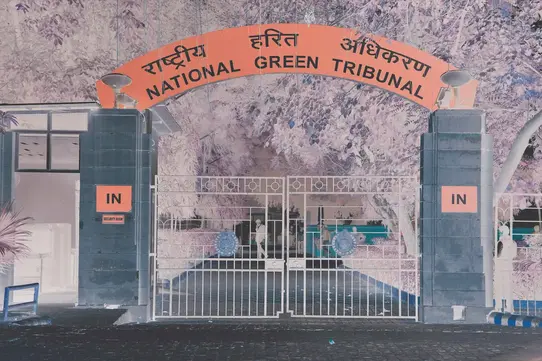By Sujit Bhar
Every now and then, news of yet another Indian river overflowing with putrid effluents hits the headlines. The National Green Tribunal (NGT) and/or the Supreme Court sit up, sometimes take suo motu cognisance of the news item and issue directives. As the polluted waters strike devastating blows for those whose livelihoods depend on the river, the courts’ decrees are blatantly disregarded by governments and the public. The news dies a natural death in a few months.
One remembers the immense attention that the MC Mehta vs Union of India case garnered among all stakeholders, including the public. It started in 1985, a year after the Bhopal gas leak, and renowned lawyer MC Mehta demanded that Shriram Food and Fertiliser Industry, located in a congested place in Delhi, had to close down after the industry leaked hazardous gas. The court ordered a relocation of the factory.
The scope of the Mehta’s effort was further expanded when Mehta filed a PIL under Article 32 of the Constitution in the Supreme Court, alleging that the water of the river Ganges was too polluted for human safety. The main reason for such pollution was untreated effluents from tanneries in Kanpur and other factories along the river banks, plus untreated effluents from city sewers.
The case carried on for a long time, with the top court issuing specific directives on sewage treatment plants (STP). In the end, the Ganges today remains as polluted, with the STPs either not installed or barely working.
The issue goes South
Now it is the turn of the Periyar River in Kerala. In a recent decision the NGT took suo motu cognizance of a news item that talked about how tonnes of fish died in a cage farm in the Periyar River at Shappukadavu near Cheranalloor in Kochi due to the uncontrolled levels of pollutants in the river. This was the ninth such incident in 2024 alone.
This has not only pushed hundreds of marginal fishermen and aquaculturists to near starvation, but has also adversely affected 5.5 million-odd people in central Kerala who depend on the river for a range of requirements—from drinking water supply to irrigation of farms to fishing and aquaculture.
As per the news item, the waters of the river are now so polluted that it virtually represents death. The river itself, says the news report, is dying, if not already dead, and the flow has shrunken to negligible levels. The pollution was a result of toxic effluents released by industrial units located along the Periyar banks. Interestingly, the Kerala Pollution Control Board had said in its preliminary report that no industrial effluents were detected in the water samples collected immediately after the fish death.
According to a study, though, the oxygen level in the water was very low. A preliminary report by the Kerala University of Fisheries and Ocean Studies pointed to low oxygen level and chemical pollutants in the water samples collected at the site of the fish death even as it expressed the suspicion that sulphur may have been released directly into the water.
Unconcerned governments
Even as highly-polluting industries virtually ring-fence the river, the state government seems completely unconcerned and a 500-tonne fish processing plant is awaiting government clearance and may get permission to set up business. How this plant will fare is anybody’s guess.
It has been alleged that this was a violation of the provisions of the Environment Protection Act, 1986; The Water (Prevention and Control of Pollution) Act, 1974 and Coastal Regulation Rules.
The NGT’s Principal Bench of Justices Prakash Shrivastava and Arun Kumar Tyagi and Dr A Senthil Vel has impleaded the Ministry of Environment Forest and Climate Change, the Kerala State Pollution Control Board, the Central Pollution Control Board and the District Collector, Ernakulam as respondents. Notices have been issued, and a positive judgment is expected.
However, governments have been known to completely disregard the implementation of the court’s orders and guidelines. This has happened with the tanneries and factories in Kanpur, as well as with effluents from riverside religious structures.
It is possible that, as the issue recedes from headlines to minor mentions in the media, quite like the grand policy of cleaning the Ganges, this issue too will be given a quiet burial.
India’s effort at cleaning rivers has gone on for decades and the money spent has been considerable. According to a report released by the Central Pollution Control Board in December 2022, only in the three preceding years the country had spent over Rs 4,000 crore on two flagship programmes, Namami Gange and the National River Conservation Plan.
The final outcome: A massive 46 percent of the 603 Indian rivers remain polluted. And that is an official estimate. We all know how such reports juggle numbers and data.
If this news about Periyar dies, it would be no more than a continuation of the sad commentary of Indian administrative acumen and a complete disregard for the lives of the poor.


